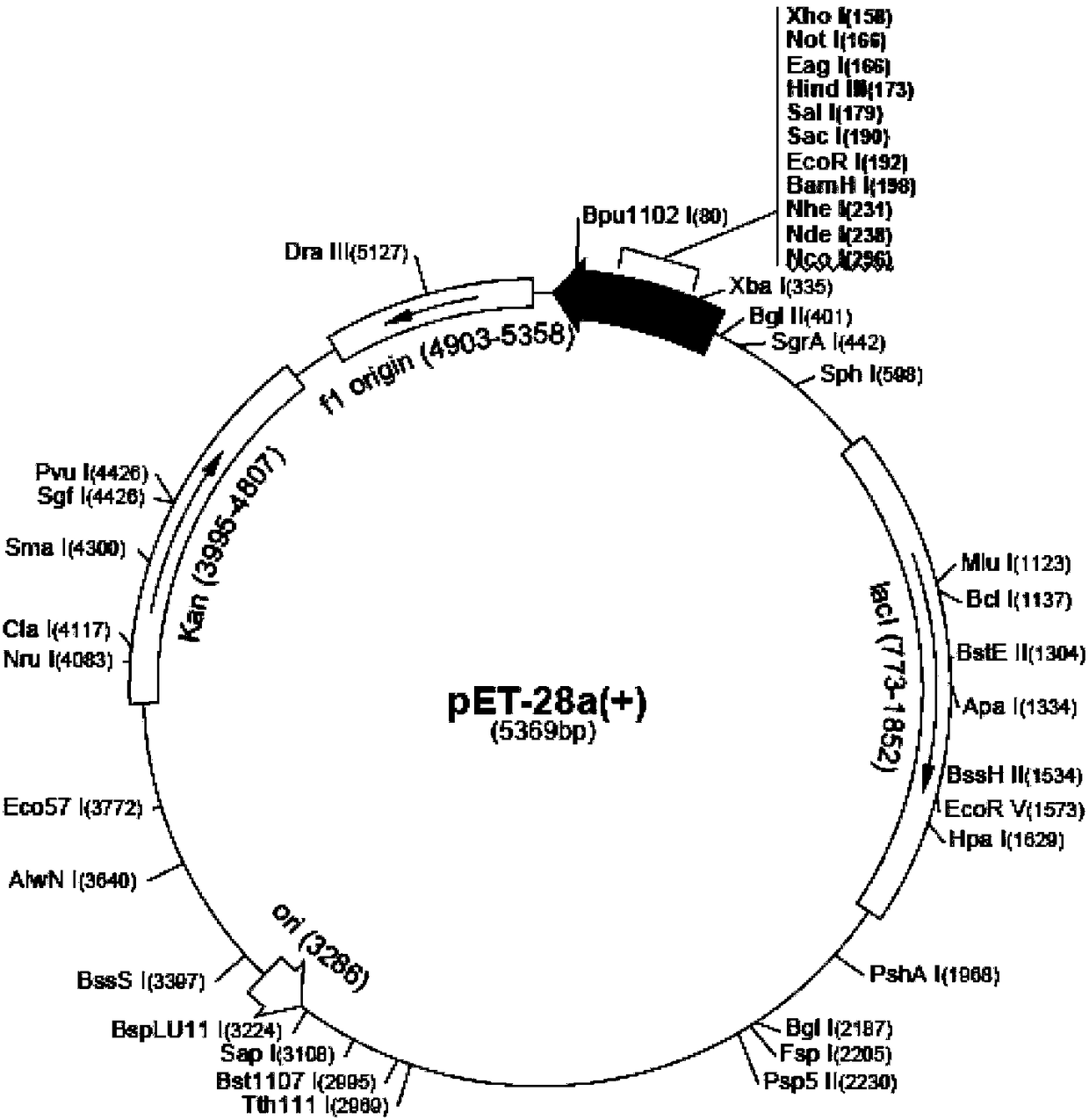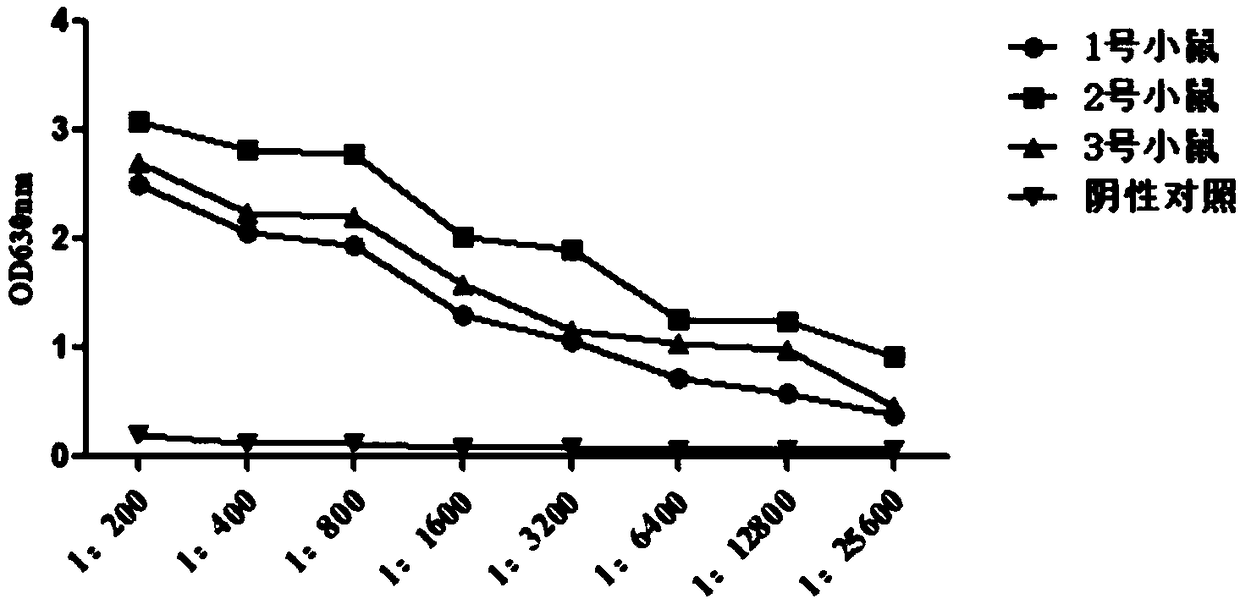Seneca Valley virus VP1 protein, coding gene, hybridoma cell line and monoclonal antibody and application thereof
A hybridoma cell line, monoclonal antibody technology, applied in the field of viruses, can solve the problem of ignoring foot-and-mouth disease and other issues
- Summary
- Abstract
- Description
- Claims
- Application Information
AI Technical Summary
Problems solved by technology
Method used
Image
Examples
Embodiment 1
[0041] Antigen preparation
[0042] 1. Massive amplification of Hubei strain of Seneca Valley virus
[0043] (1) BHK-21 cells were subcultured to 175cm 2 In the culture flask, in the culture medium of DMEM+10%FBS+1%PS at 37℃, 5%CO 2 cultured to 80% fullness.
[0044] (2) Replace the medium with serum-free DMEM, add the amount of SVV-CH-HB2016 virus with an MOI of 0.1, 37°C, 5% CO 2 Under the condition of infection for 1h.
[0045] (3) Remove the supernatant and replace it with DMEM+2%FBS+1%PS medium, 37°C, 5%CO 2 Cultivate for about 24 hours until 50% to 60% of the lesions of the cells float up in a spherical shape, but the cells cannot be lysed.
[0046] 2. Purification of Whole Virus Particles of Seneca Valley Virus Hubei Strain
[0047] (1) Removal of cell debris: After cell amplification of SVV virus (cytopathic), the mixture of cells and supernatant was initially centrifuged at 4°C and 10,000 rpm for 30 min to remove cell debris.
[0048] (2) Ultracentrifuge virus ...
Embodiment 2
[0056] Preparation of monoclonal antibodies
[0057] (1) Immunization test
[0058] The immunization test used 5-week-old female BALB / c mice (purchased from the Experimental Animal Center of Huazhong Agricultural University, referred to as mice), and the whole virus particles purified and prepared in Example 1 were used as antigens. The immunization procedures are shown in Table 1:
[0059] Table 1 Mouse immunization program
[0060]
[0061] Ten days after the third immunization, blood was collected by docking the tail, and the serum titer of the mice was detected by indirect ELISA method, and the mouse with the highest serum titer was selected for subsequent experiments.
[0062] The serum titer detected by the indirect ELISA method is as follows:
[0063] 1. Establishment of indirect ELISA detection method
[0064] Determine the optimal coating concentration of the antigen and the optimal dilution factor of the serum by square array titration:
[0065] (1) Dilute the...
Embodiment 3
[0122] Bioactivity detection of monoclonal antibodies
[0123] (1) Ascites titer determination: The titer of the above-mentioned monoclonal antibody in ascites was detected by indirect ELISA method. After coating the microtiter plate with the SVV whole virus particle prepared by the present invention, the ascites was mixed from a volume ratio of 1:2 1 ×100 Ratio 1:2 16 ×100 times was used as the primary antibody, HRP-labeled goat anti-mouse IgG (purchased from Wuhan Boster Biological Co., Ltd.) was used as the secondary antibody for indirect ELISA detection, and non-immunized mouse serum was used as a negative control.
[0124] Test results: the ascites titer of the monoclonal antibody described in the present invention is 1:2 13 ×100.
[0125] (2) Expression of recombinant protein pET-28a-SVV-VP1
[0126]First, the genetic software MacVector 7.2 was used to analyze the gene sequence encoding wild-type SVV VP1 to find out its codon usage bias, and to find out the sites in ...
PUM
| Property | Measurement | Unit |
|---|---|---|
| diameter | aaaaa | aaaaa |
Abstract
Description
Claims
Application Information
 Login to View More
Login to View More - R&D
- Intellectual Property
- Life Sciences
- Materials
- Tech Scout
- Unparalleled Data Quality
- Higher Quality Content
- 60% Fewer Hallucinations
Browse by: Latest US Patents, China's latest patents, Technical Efficacy Thesaurus, Application Domain, Technology Topic, Popular Technical Reports.
© 2025 PatSnap. All rights reserved.Legal|Privacy policy|Modern Slavery Act Transparency Statement|Sitemap|About US| Contact US: help@patsnap.com



